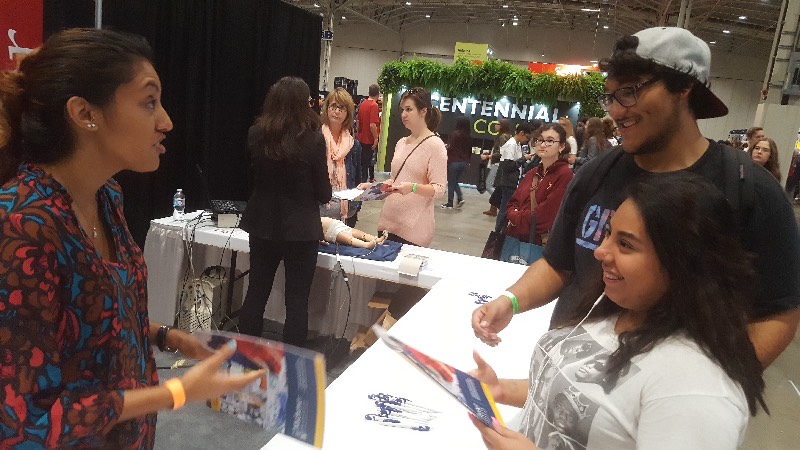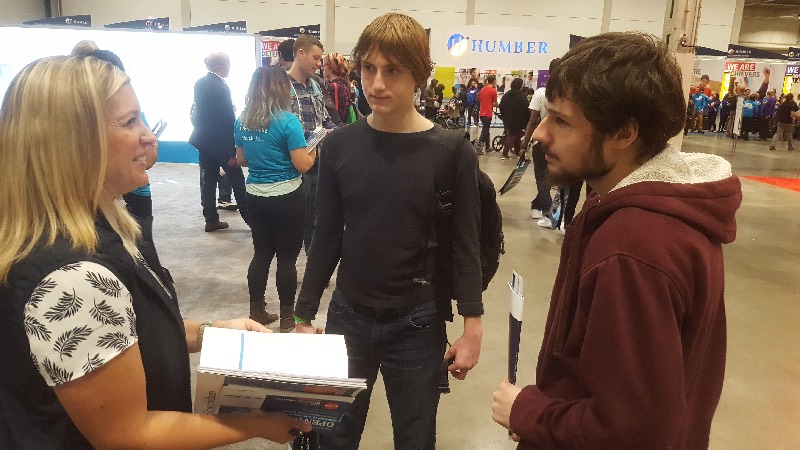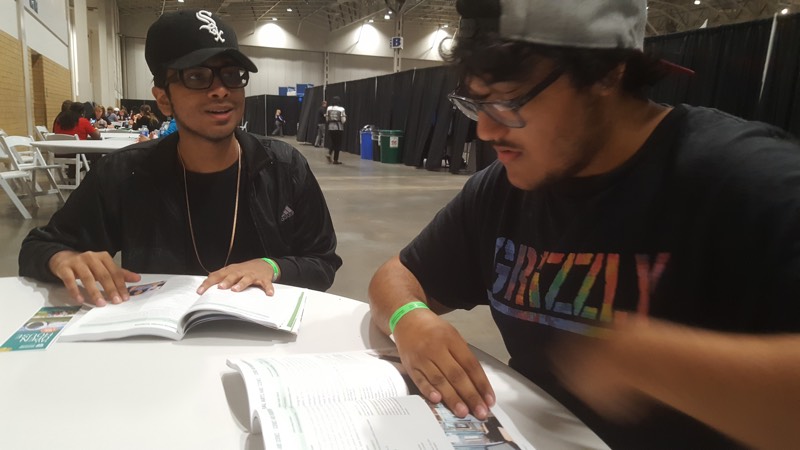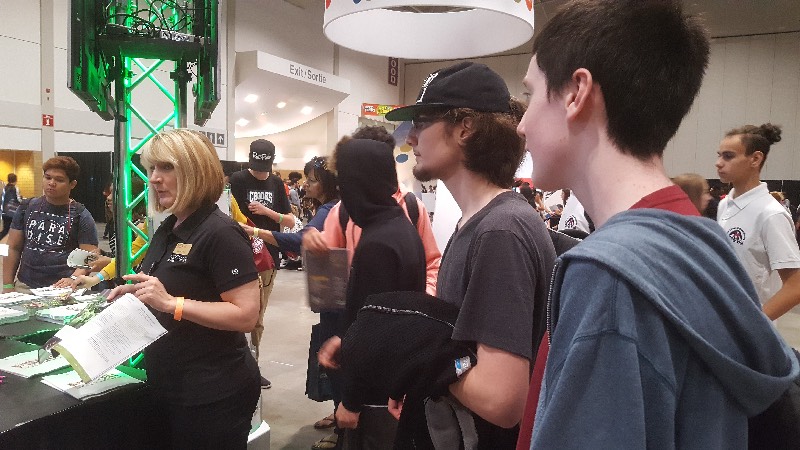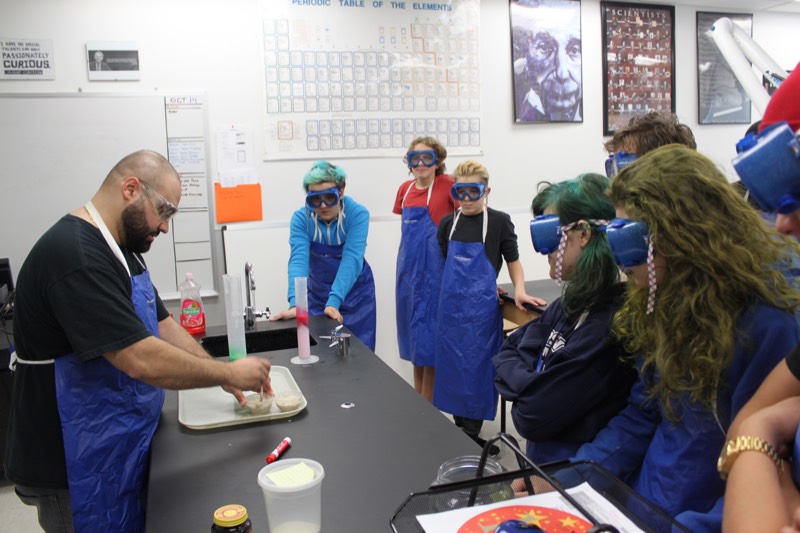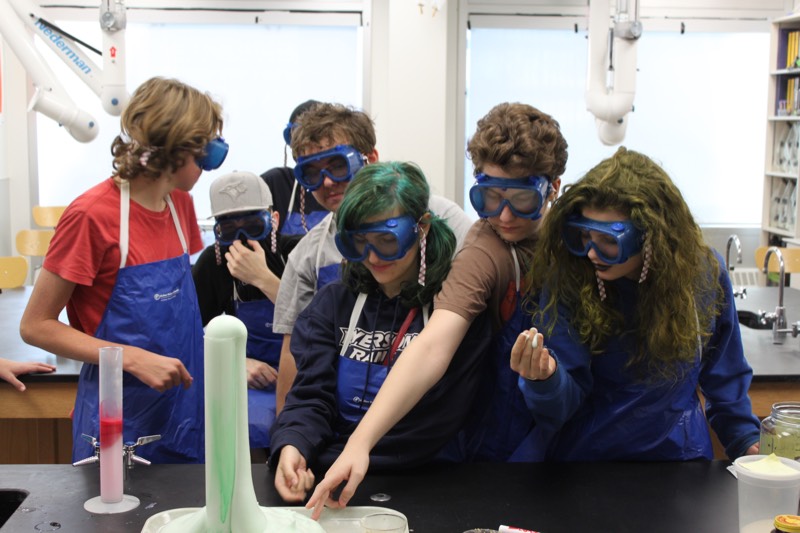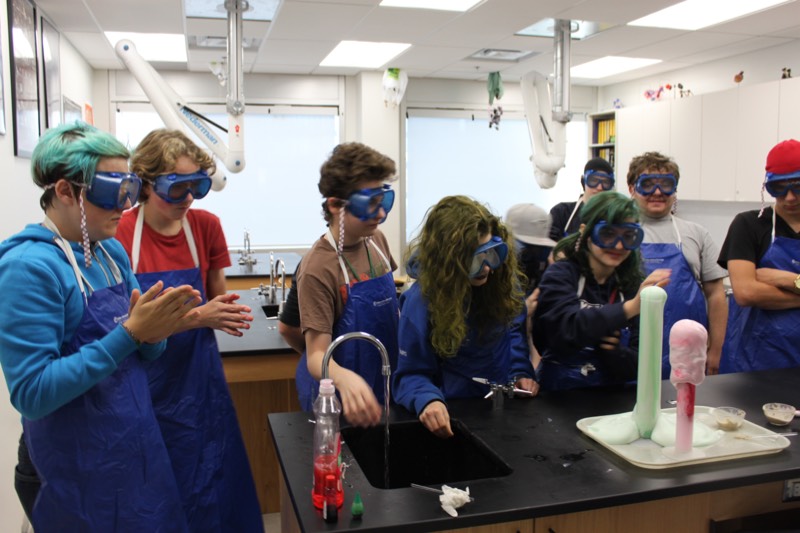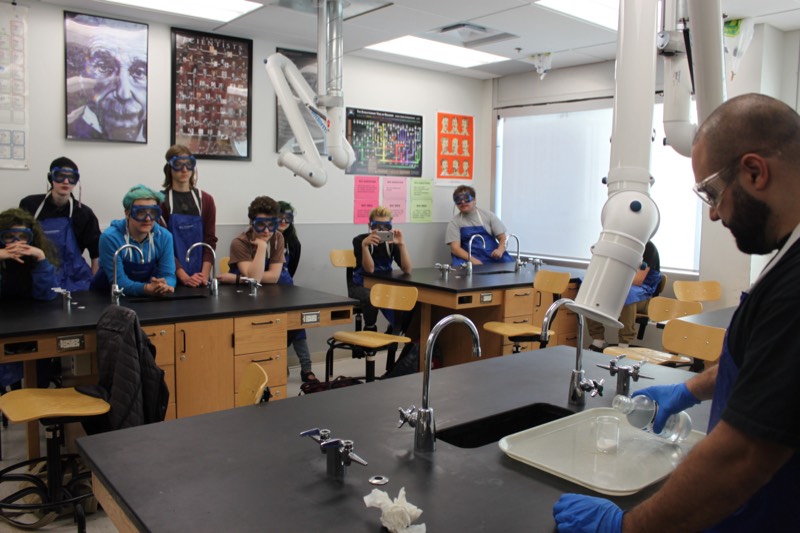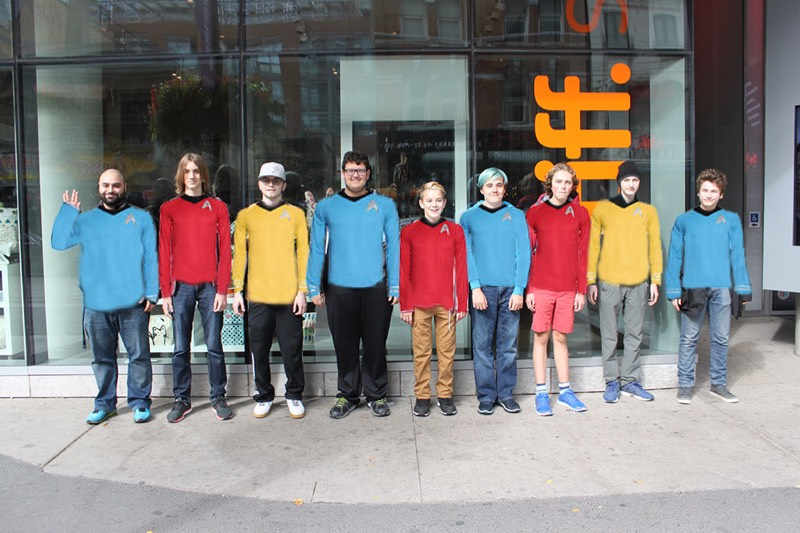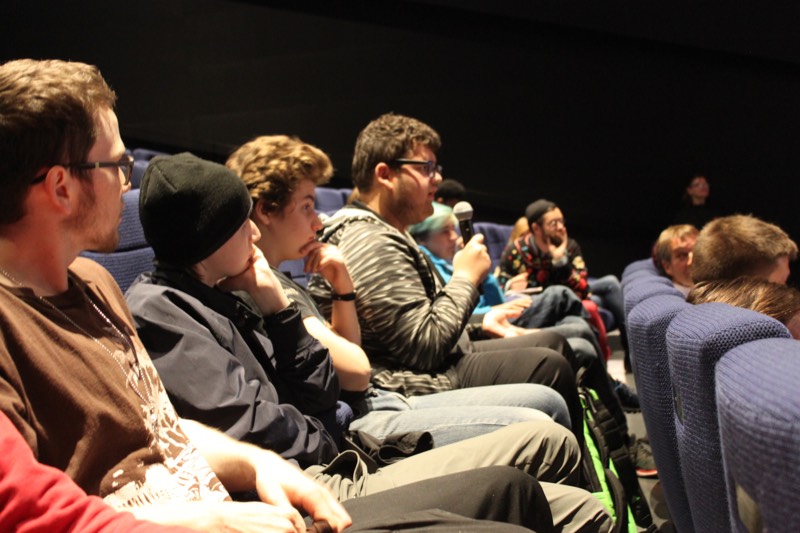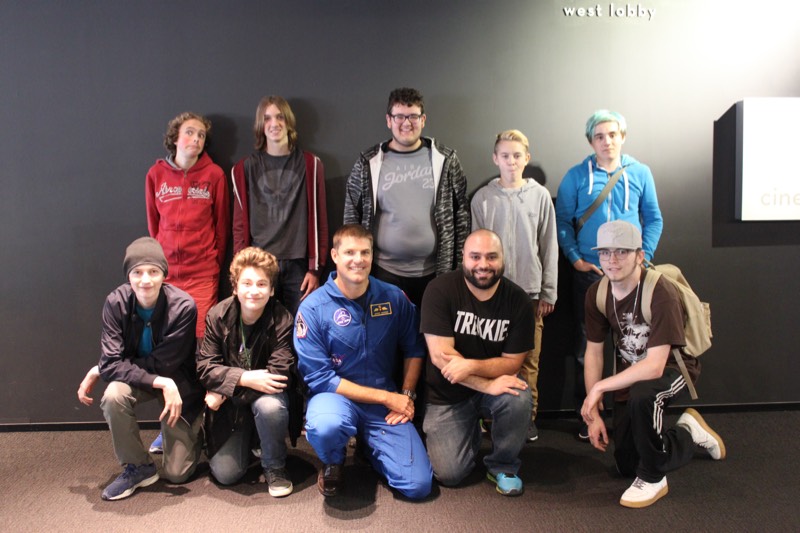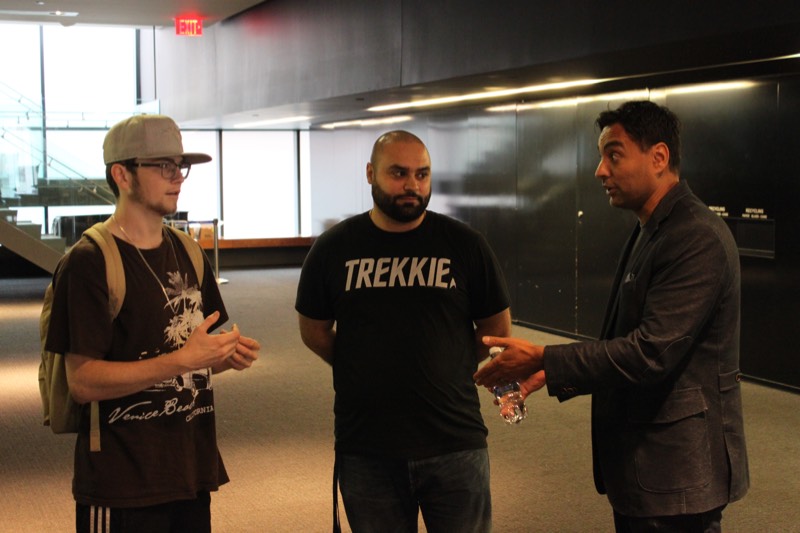On October 18th, the Academy’s senior grade eleven and twelve students made their yearly pilgrimage to the Ontario College Fair. The students journeyed from booth to booth with the opportunity to ask questions to current college students and professors. The visit was a first for the grade eleven students. This first visit is meant to get them prepared and thinking about what they may like to study and which schools they may want to study at a year in advance of their actual application process. For the grade twelve students, it was their second visit, this time focusing in on the schools and programs they have already chosen for their applications.
The Elephant Toothpaste Lab
Chemical reactions occur all the time around us. Whether it is a cookie baking in the oven or a battery producing electricity, chemical reactions drive the world around us whether we notice them or not. There are eight types of chemical reactions, four of which we focus on in grade 10 chemistry. These reactions include:
- synthesis
- decomposition
- single displacement
- double displacement
Learning about the chemical formulas that represent chemical reactions although important, is no where near as exciting as seeing what these chemical reactions look like in real life. In order to help students see past the equations, we can carry out slightly scaled up chemical reactions in the classroom to bring them to life. One such reaction that is a perennial favourite is the “Elephant Toothpaste” reaction, so called because the end product looks like a large tube of toothpaste being squeezed out of a bottle large enough to clean an elephant’s teeth.
The reaction is an example of a decomposition reaction. Hydrogen peroxide is mixed with some dish soap (and food colouring for effect) and then mixed with either potassium iodide or baker’s yeast mixed with warm water. The hydrogen peroxide decomposes into water and oxygen. With the aid of the potassium iodide or baker’s yeast as catalysts to speed up the reaction, the oxygen enters the soap bubbles causing the substance to quickly expand out of its container and overflow like squished toothpaste all over the table. The result is an exited room of students and a happy science teacher.
Another demonstration of a chemical reaction that is very captivating is the dehydration of sugar by sulphuric acid. In this demonstration, sulphuric acid is added to plain granulated sugar. Sulphuric acid being a dehydrating agent strips the sugar molecules of water leaving behind carbon. The outcome looks like a spectacular display of what looks like a giant snake appearing out of no where and which is quite the spectacle to witness.
Check out more photos from this event on our Facebook page!
Trek Talks: Bridging Science and the Arts
This year marks the 50th Anniversary of the debut of Star Trek, a show that has captured the imagination of its fans, inspired the creation of many technologies, and most importantly, given viewers an encouraging vision of the future where the human race has learned to work with one another in a utopian society. In honour of this milestone, the Toronto International Film Festival (TIFF) Lightbox Theatre has put together a series of events to celebrate the occasion.
One such event is Trek Talks: Bridging Science and the Arts. This is a panel style discussion on Star Trek and education which includes a physician (Sonny Kohli) a Canadian astronaut (Jeremy Hansen) and Royal Ontario Museum Managing Director (Marianne Mader). The panel will discuss how science can inspire the arts and how the art in turn can inspire science. The panel will also discuss how film and television projects like Star Trek inspire careers in science, space, technology, math, arts, and engineering.
Since Star Trek embodies so much science, it was (as Mr. Spock would say) a logical conclusion to take the grade 10 science class to partake in this discussion. And so on star date 10.13.16, the grade 10 science class, along with their Captain and the Academy’s Technical Analyst officer, boldly navigated their way to the TIFF Lightbox Theatre at warp speed, and listened in awe to the stories and anecdotes of the presenters.
After being introduced to the panel, the audience was shown a video montage of a variety of scenes from the various Star Trek television shows that visually demonstrated the science and art themes of the event. The panel discussed and explored a variety of questions and topics audience which included:
- How Star Trek influenced their career path
- What aspects of Star Trek have allowed its legacy to last for 50 years?
- The importance of scientific accuracy in television shows
- The ethics of scientific progress
- The advantages of a scientifically literate society
- Star Trek’s influence on the development of technology
- The importance of risk taking in scientific exploration
After listening to the panel members’ personal and enthusiastic answers, the audience were granted an opportunity to ask questions to the panel. Three of our student’s posed their questions to the panel and listened with curiosity to the answers. After the event concluded, we had the honour of taking a group photograph with one of the panel members, Canadian astronaut Jeremy Hansen.
Check out more photos from this event on our Facebook page!
To watch the entire panel discussion see below! (To skip to our student questions, forward to time index 1 hour, 31 minutes)
Chemistry students observe reactions
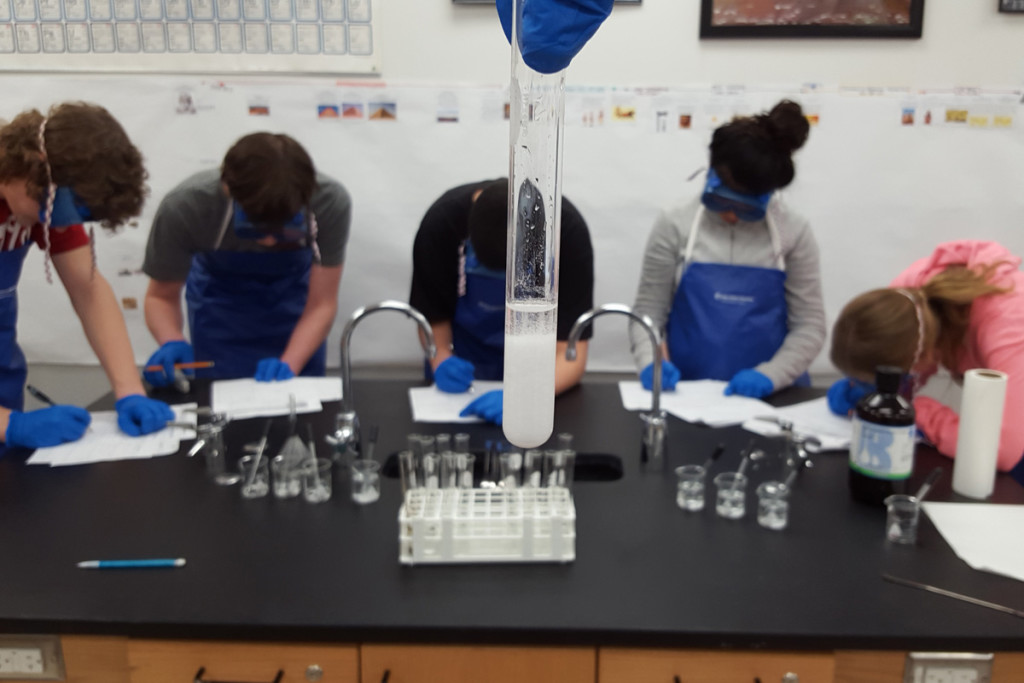
Atoms are all around us. They make up everything we know. Having a fundamental understanding of their properties and characteristics grants us the ability to analyse pretty much any substance and discern its chemical and atomic makeup. There are several ways of figuring out the chemical makeup of substances. In the matter and qualitative analysis unit of grade 12 chemistry, we look at some of the techniques chemists use to analyse matter. Specifically, we look at the use of mass spectrometers, flame tests, emission/absorption spectra, and lastly precipitation reactions.
In order to apply their knowledge and understanding of qualitative analysis, the grade 12 chemistry class was tasked with running a series of precipitation reactions in order to figure out the identity of an unknown chemical substance. Using their knowledge of precipitation reactions, solubility rules and net ionic equations, they observed a series of reactions between known substances and a single unknown sample. Using all of the aforementioned tools along with their recorded observations, they determined the identity of the unknown substance and reported their methods, observations, and conclusions in a formal lab report.
Exploring ancient stories of the night sky
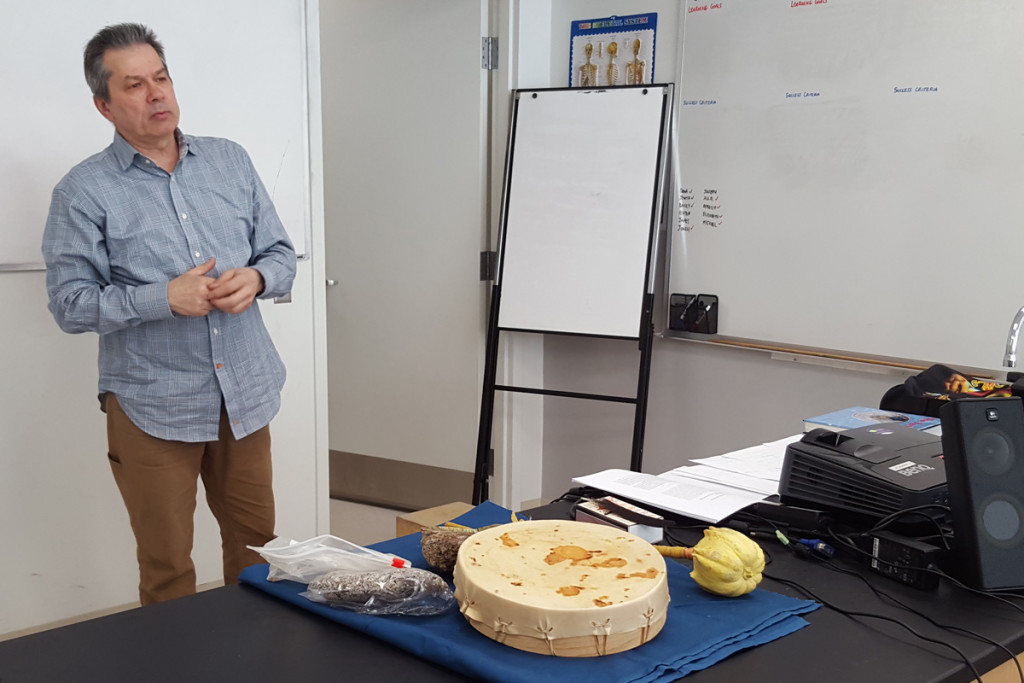
Astronomy is one of the oldest natural sciences. As long as humans have been able to look up at the sky, we have done so, wondering what our place is in the universe, where we came from, and how the universe itself came to be. Many (if not all) ancient civilizations have creation stories of how the universe came to be, and of constellations and celestial objects. As we started our new unit of Earth and Space exploration, we had the pleasure of having master orator Jim Adams share Aboriginal stories about celestial objects, constellations, and the universe as a whole.
We first heard a story about Sky Woman, which connected the Earth and the sky. Next, we heard about Atima and Atchaksuk, the dog and light/star respectively. Lastly, we heard three stories about constellations. The first story was one about a wolf which related to the little dipper. The second story was about Mista Muskwa (the big bear) which is commonly known as Ursa Major which has the Big Dipper as part of it. The last story was about the Pleiades constellation. By the end of the class, students were still thirsty for more stories. We may have to call in Jim again in order to appease the students’ desire to hear more Aboriginal stories.


